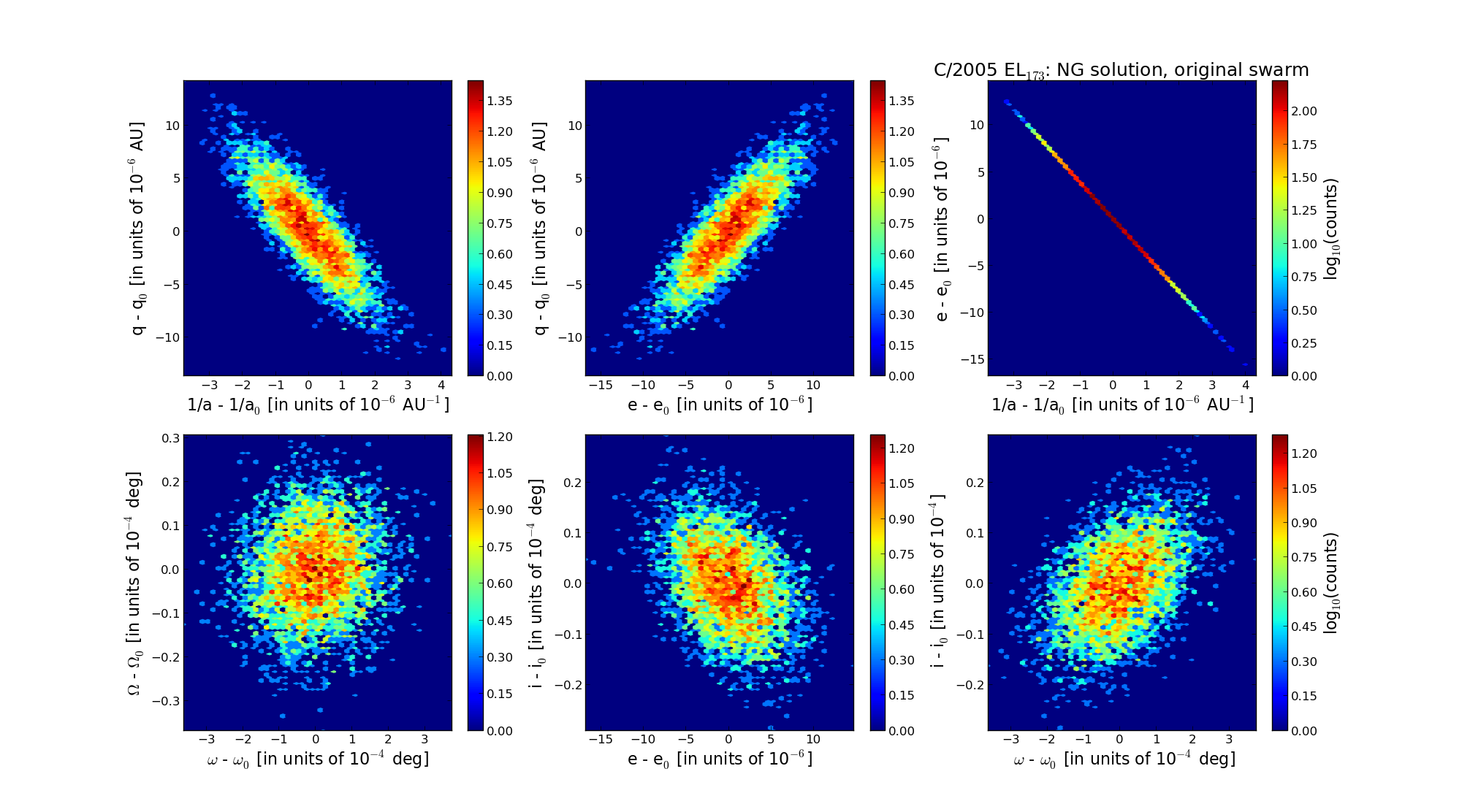| Solar System Dynamics & Planetology Group |
 |
C/2005 EL173 LONEOS |  |
| Solar System Dynamics & Planetology Group |
 |
C/2005 EL173 LONEOS |  |
| number of observations | 317 |
| number of residuals | 632 |
| data interval | 2005 Mar. 3 — 2008 Nov. 17 |
| rms [arcsec] | 0.36 |
| orbit quality class | 1a+ |
| Epoch (TT) | 20070301.0 | = JD 2454160.5 |
| time of perihelion passage (TT) | 20070305.871906 | ± 0.000180 |
| perihelion distance | 3.88631166 | ± 0.00000283 |
| eccentricity | 1.00333283 | ± 0.00000329 |
| argument of perihelion [deg] | 261.493679 | ± 0.000034 |
| longitude of the ascending node [deg] | 344.796425 | ± 0.000009 |
| inclination [deg] | 130.679610 | ± 0.000008 |
| inverse semimajor axis [10-6 au-1] | -857.58 | ± 0.84 |
| Nongravitational parameters [10-8 au/day2] | A1 = 6602 ± 773 | A2 = -7175 ± 496 | A3 = 0.0 (assumed) |

| Epoch (TT) | 17030623 | |
| time of perihelion passage (TT) | 20070305.845896 | ± 0.000536 |
| perihelion distance | 3.88759263 | ± 0.00000374 |
| eccentricity | 0.99982582 | ± 0.00000387 |
| argument of perihelion [deg] | 261.492080 | ± 0.000096 |
| longitude of the ascending node [deg] | 344.763229 | ± 0.000009 |
| inclination [deg] | 130.759788 | ± 0.000008 |
| inverse semimajor axis [10-6 au-1] | 44.81 | ± 0.99 |
| Epoch (TT) | 23100313 | |
| time of perihelion passage (TT) | 20070305.948169 | ± 0.000563 |
| perihelion distance | 3.88766749 | ± 0.00000364 |
| eccentricity | 1.00007433 | ± 0.00000354 |
| argument of perihelion [deg] | 261.461335 | ± 0.000111 |
| longitude of the ascending node [deg] | 344.826942 | ± 0.000009 |
| inclination [deg] | 130.732213 | ± 0.000008 |
| inverse semimajor axis [10-6 au-1] | -19.12 | ± 0.91 |